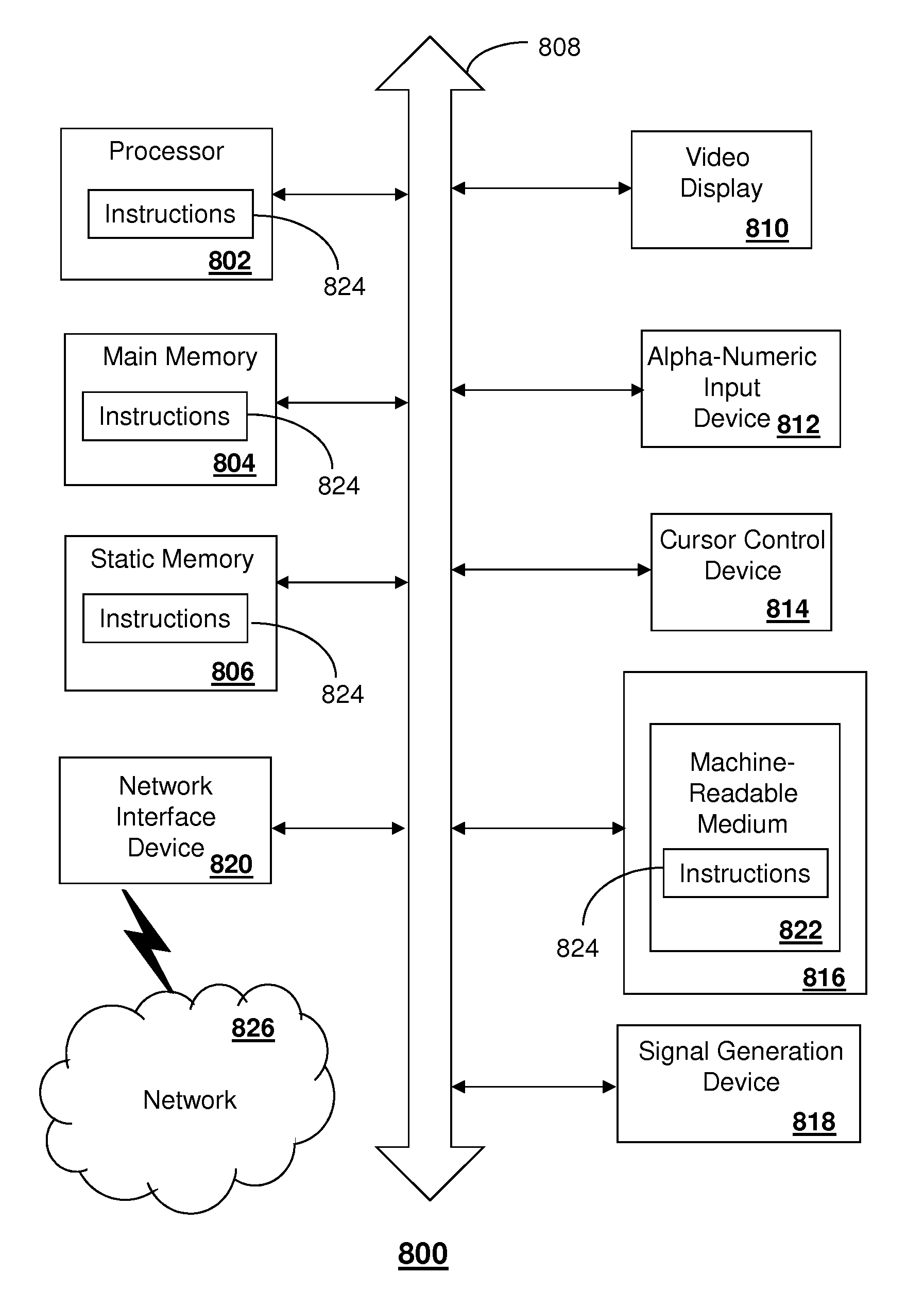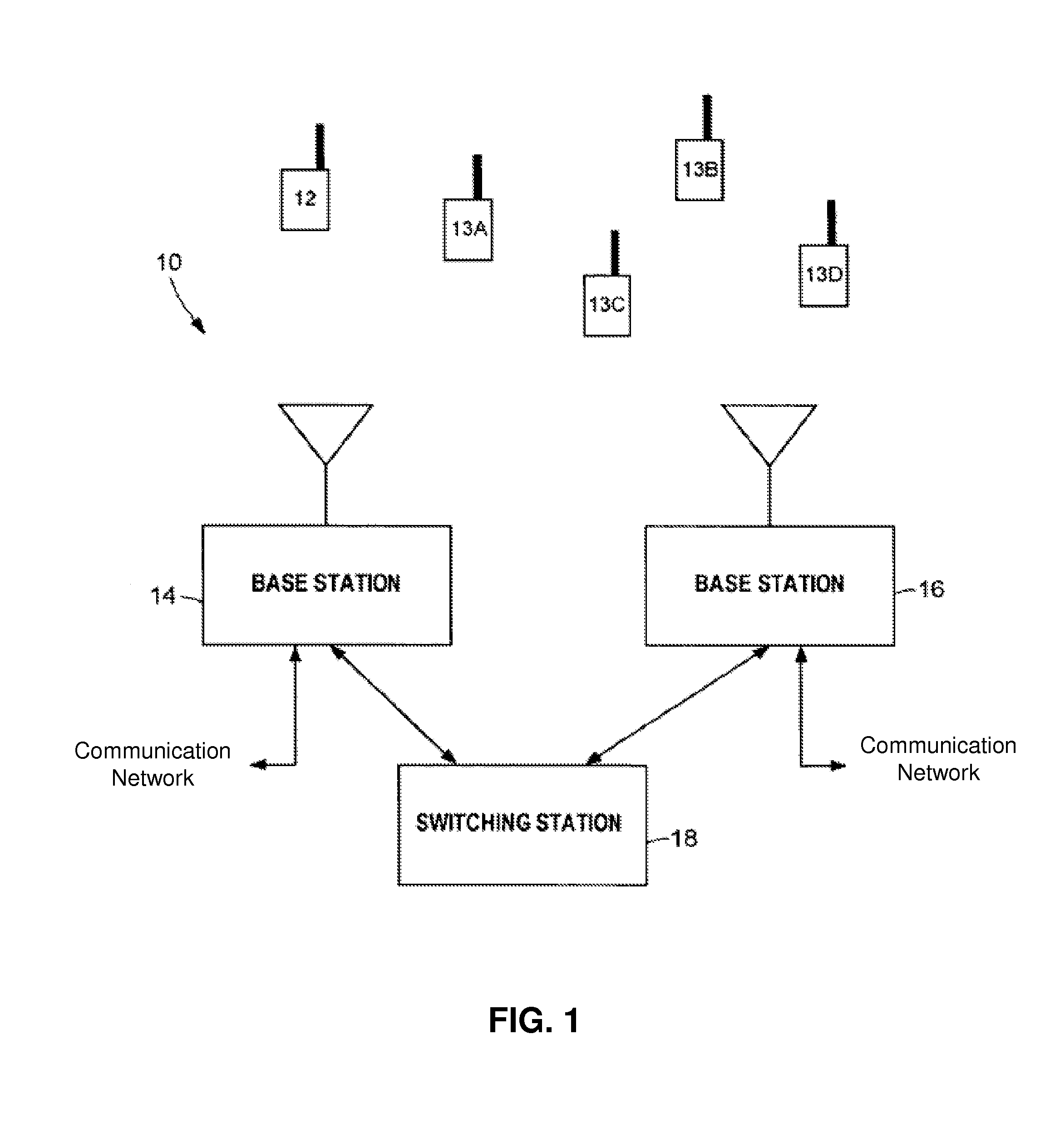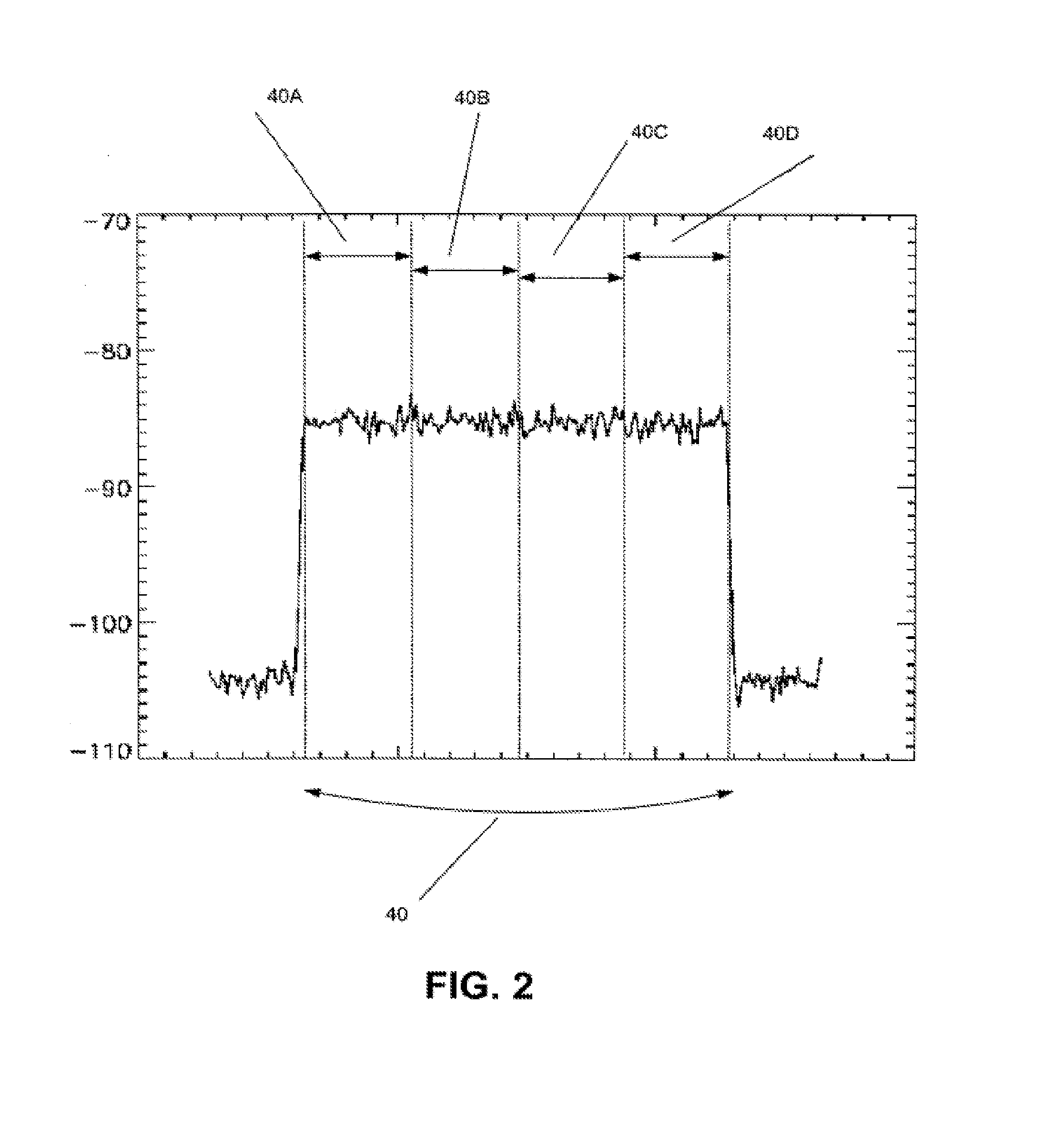Method and appartus for signal interference processing
a signal interference and processing method technology, applied in the direction of transmission monitoring, receiver monitoring, frequency-division multiplex, etc., can solve the problems of affecting the performance of a communication system, reducing throughput, and dropping calls
- Summary
- Abstract
- Description
- Claims
- Application Information
AI Technical Summary
Benefits of technology
Problems solved by technology
Method used
Image
Examples
Embodiment Construction
[0026]The subject disclosure describes, among other things, illustrative embodiments for detecting and mitigating interference signals. Other embodiments are included in the subject disclosure.
[0027]One embodiment of the subject disclosure includes a method for measuring, by a system comprising a processor, a power level in each of a plurality of resource blocks occurring in a radio frequency spectrum of a wireless communication system, wherein the measuring occurs for a plurality of time cycles to generate a plurality of power level measurements for each resource block, calculating, by the system, a baseline power level for each resource block of the plurality of resource blocks according to at least one of the plurality power level measurements of each resource block to generate a plurality of baseline power levels for the plurality of resource blocks, calculating, by the system, an aggregate baseline power level according to at least a portion of the plurality of baseline power l...
PUM
 Login to View More
Login to View More Abstract
Description
Claims
Application Information
 Login to View More
Login to View More - R&D
- Intellectual Property
- Life Sciences
- Materials
- Tech Scout
- Unparalleled Data Quality
- Higher Quality Content
- 60% Fewer Hallucinations
Browse by: Latest US Patents, China's latest patents, Technical Efficacy Thesaurus, Application Domain, Technology Topic, Popular Technical Reports.
© 2025 PatSnap. All rights reserved.Legal|Privacy policy|Modern Slavery Act Transparency Statement|Sitemap|About US| Contact US: help@patsnap.com



